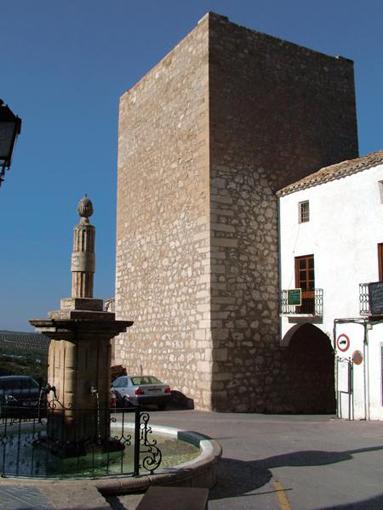Jimena

This village is situated to the south of the province, on the north face of the Sierra Magina Mountains, in a landscape which combines olive groves, fruit trees and orchards with rugged uncultivated land.
It preserves some interesting monuments such as the Church and the Palace of the Marquis of Camarasa.
Its municipal district lies within the Sierra Magina National Park, a part of the Subbetic region, which offers beautiful and spectacular views. With regard to vegetation, Holm and Gall oaks are frequent, as well as pine trees and salgareños. Its rich and varied wildlife is also important.
History
The first human settlements date from prehistoric times, as we can see from the cave paintings found in the Cueva de la Graja.
The Iberian period probably saw the birth of the settlement of Girysena on the Cerro de Alcala.
Under Roman rule, this probably was the village of Saccubo.
During the al-Andalus period, its fortress was an outpost of the Kingdom of Baeza.
The Christian conquest was led by King Fernando III in 1234.
It receives Village charter in 1317, and the land is divided between forty neighbours.
The Emperor Carlos V, took these estates from the Order of Calatrava, and sold Jimena and Recena to his secretary, Don Francisco de Cobos. His descendants owned these lands with the title of marquises of Camarasa until the abolition of estate privileges in the first part of the 19th century.
Eminent citizens
Juan Díaz Caballero.
Gil de Lanzas.
Pedro María Barrera.
Pedro Torres Lanas, director of the Archivo de Indias.
Vicente Martínez Gámez, naturalist.
Juan Amezcua Rejas.
Lope Píñar.
Martín Lanzas, hero of Cabrerizas.
Trinidad Torres, musicologist.
Julio Casado Calatrava.
Martín Píñar.
José Gámez Invernón.
Segundo Gámez Almagro, painter.

- Max 14
- Min 9
- Max 57
- Min 48
- °C
- °F














